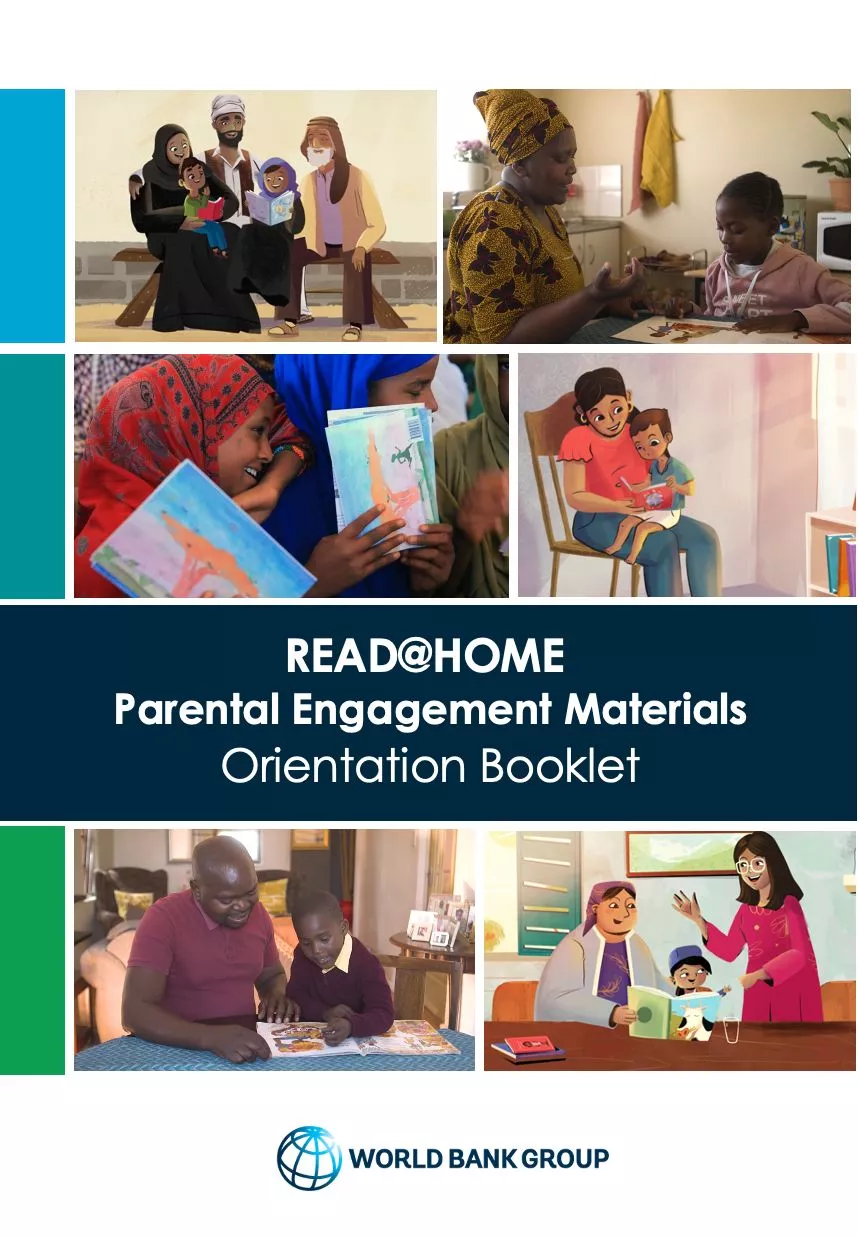

This booklet provides an overview of all the resources in the Parent Engagement Package and guidance on how these materials could be used, adapted, and combined in different contexts.


This booklet provides an overview of all the resources in the Parent Engagement Package and guidance on how these materials could be used, adapted, and combined in different contexts.
This Guidance Note is designed to support government and World Bank teams in preparing accurate and complete bidding documents for books, evaluating proposals, and awarding contracts.
Access to books (textbooks, teacher’s guides, and materials for reading practice) is key to addressing learning poverty. Children need to be exposed to sufficient and appropriate text, and they need to be afforded the time and opportunity to practice reading in school and at home. Appropriate design of reading books will facilitate learning, support instruction, and promote independent learning.
Education projects funded by The World Bank procure textbooks and other teaching and learning materials through national and international tenders (bids). Documents for the tenders describe the purposes of the procurement, the qualification requirements for potential bidders, and the technical specifications of the education materials to be procured.
The World Bank’s Read@Home initiative is an unprecedented effort to get reading, learning, and play materials into homes to address the learning loss caused by the COVID-19 pandemic and widespread, pre-existing "learning poverty". Connected to the distribution and use of these materials is the question of copyright.
This Guidance Note was created for the Read@Home project to help writers, illustrators, and designers create books for young children to share with their families at home. Of course, such books may be used in schools as well. In either case, these will be enjoyable books that children will want to read, so they will learn to love reading and develop the life-long habit of reading.
Low-cost, high-quality printing of teaching and learning materials (TLM) requires well-designed and highly competitive procurement. Since 2010, Mozambique has implemented a range of measures to reduce costs over time, making its printing procurement possibly the most competitive in Africa. As a result, printed pages purchased by Mozambique cost less than half of those purchased across the channel in Madagascar.
This report is a brief introduction to the Republic of the Marshall Islands Book Supply Chain, focusing for practical reasons on the National capital, Majuro. The initiative began through the lens of human rights and particularly a child’s right to literacy in a language they understand. It was sparked by the lack of children’s books in the Marshall Islands.
As schools in Uganda closed down in late March 2020 due to Covid-19, Mango Tree Literacy Lab (MTLL) had to reconsider its 2020 work plan.
To teach young children to read, teachers and students need textbooks, lesson plans, and reading materials that are aligned with each other and with the science of reading. Books should also be procured at reasonable costs, and delivered to every classroom before the start of the school year.
Most classrooms in low-income countries lack sufficient instructional resources, despite substantial investment in textbooks and other teaching and learning materials (TLM) over decades. One major cause of this continuing scarcity is that complex, costly, and opaque supply chains cause books to go missing or be delayed. Past attempts at developing distribution management solutions have been overly complex, too project-specific, and/or too expensive, making broad-scale adoption impossible.
Read@Home’s Track and Trace (R@HTnT) app is a revolutionary low-cost platform designed to bring transparency and efficiency to the TLM supply chain. Whether it’s a school textbook, teacher guide, book for reading practice, or tablet, ensuring TLMs get from the production point and into students’ hands is crucial. The open-source app, funded by the World Bank’s Read@Home initiative, can ensure that every stakeholder has real-time visibility into the journey of their TLMs and allow them to solve problems and correct issues that arise along the way.
La plupart des salles de classe des pays à faible revenu manquent de ressources pédagogiques suffisantes, malgré des investissements importants dans les manuels scolaires et autres matériels d'enseignement et d'apprentissage (TLM) au cours des dernières décennies. L'une des principales causes de cette pénurie persistante est que les chaînes d'approvisionnement complexes, coûteuses et opaques entraînent la disparition ou le retard des livres. Les tentatives passées de développement de solutions de gestion de la distribution ont été trop complexes, trop spécifiques à un projet et/ou trop coûteuses, ce qui a rendu impossible leur adoption à grande échelle.
L'application Track and Trace (R@HTnT) de Read@Home est une plateforme révolutionnaire à faible coût conçue pour apporter transparence et efficacité à la chaîne d'approvisionnement des TLM. Qu'il s'agisse d'un manuel scolaire, d'un guide de l'enseignant, d'un livre de lecture ou d'une tablette, il est essentiel de s'assurer que les TLM parviennent du point de production jusqu'aux élèves. L'application open source, financée par l'initiative Read@Home de la Banque mondiale, permet à chaque partie prenante de suivre en temps réel le parcours de ses TLM et de résoudre les problèmes qui surviennent en cours de route.
This updated primer discusses challenges and issues faced by content creators, such as publishers, authors, illustrators, and teachers, all of whom have a stake in producing high-quality and cost-effective materials for education. This version includes lessons learned from the COVID-19 lockdowns, technology challenges that still impede access to digital content, and the tradeoffs between digital access and print.
La plupart des salles de classe des pays à faible revenu manquent de ressources pédagogiques, malgré les investissements substantiels dans les manuels scolaires et autres matériels d'enseignement et d'apprentissage sur plusieurs décennies.
This note outlines the World Bank’s Read@Home initiative’s recommendations for a “first collection” of children’s
literature. It is intended for Read@Home and other early reading programs involved in the development and/or
selection of books to support children’s pre-reading and early reading skills.